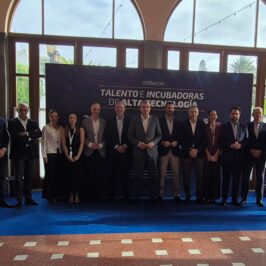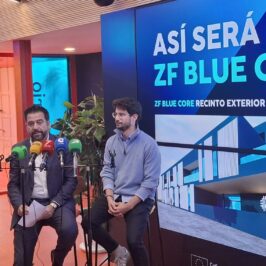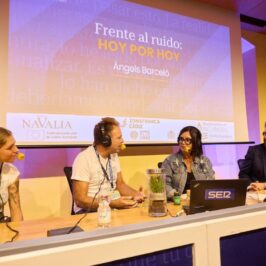A research project embedded in a startup’ and led by the neurologist Joan Montaner studies the healthy properties of the halophyte plants of the Bay, among which is the salicornia
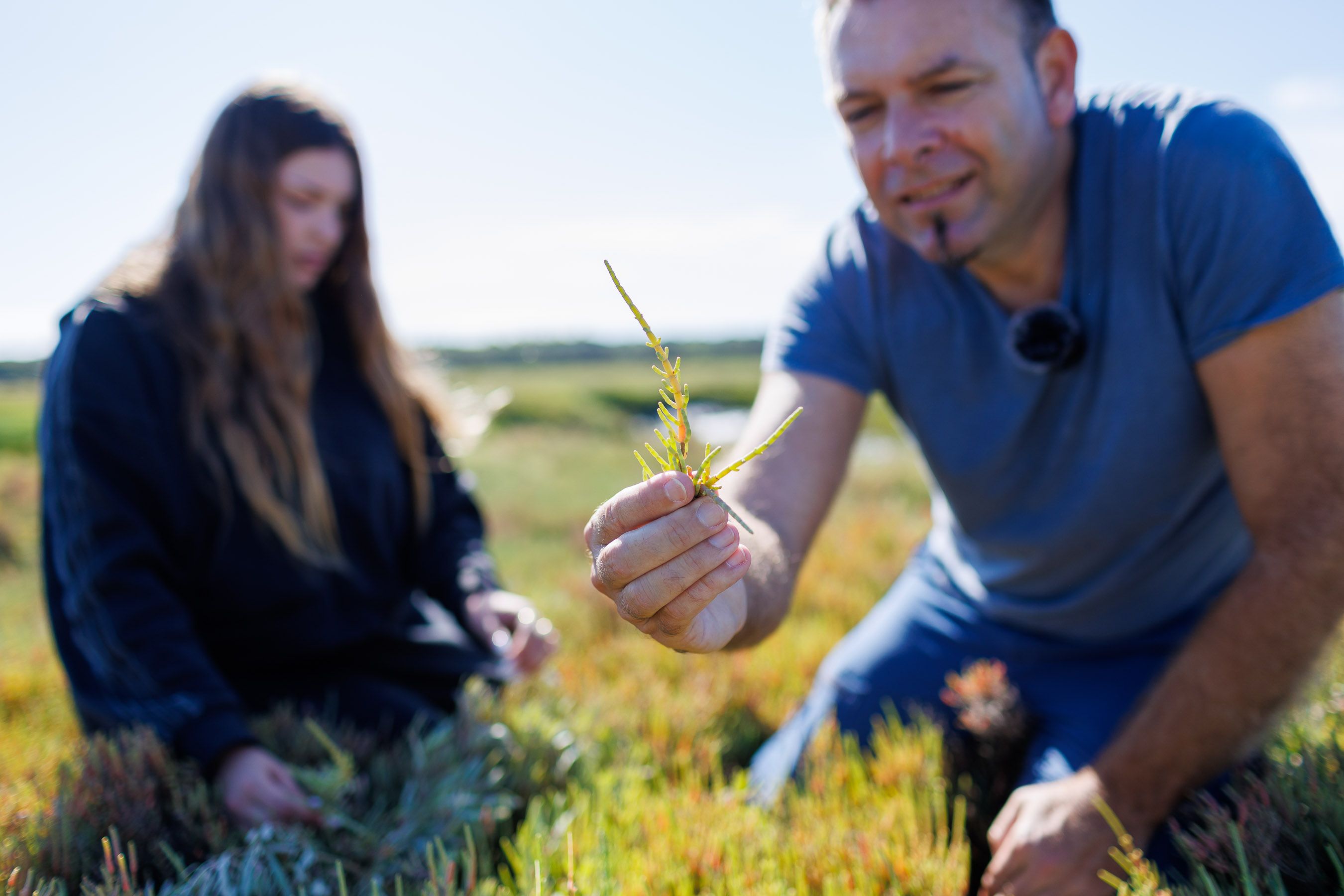
In between San Fernando and Puerto Real, in the municipality of the latter, hides a natural paradise that goes almost unnoticed just a few steps from the road. Pipes and estuaries run through the U-shaped area, which is dotted with old floodgates and even the remains of rails from the wagons that were formerly used to transport salt.
In the distance, the view reaches a group of flamingos. Several birds fly over the sky. It is the Santa Barbara salt mine, which has decades of history behind it. It was one of the emblematic salt flats in the area; Not in vain, years ago, its production was around 7,000 tons of salt per year.
Today, Joan Montaner and her daughter Estrella, neurologist and environmentalist, respectively, walk along its dirt roads. They show lavozdelsur.es the corners of this place that has become their place of work and research, and that they already know perfectly. They have been working here for a year now.
With a gesture of his hand, Dr. Montaner covers the entire salt flat, which in its furthest part reaches the Pinar de los Franceses. To the south and east, Santa Bárbara borders the Zurraque channel, to the north with another salt mine, San Pascual, and to the west with National Highway IV.
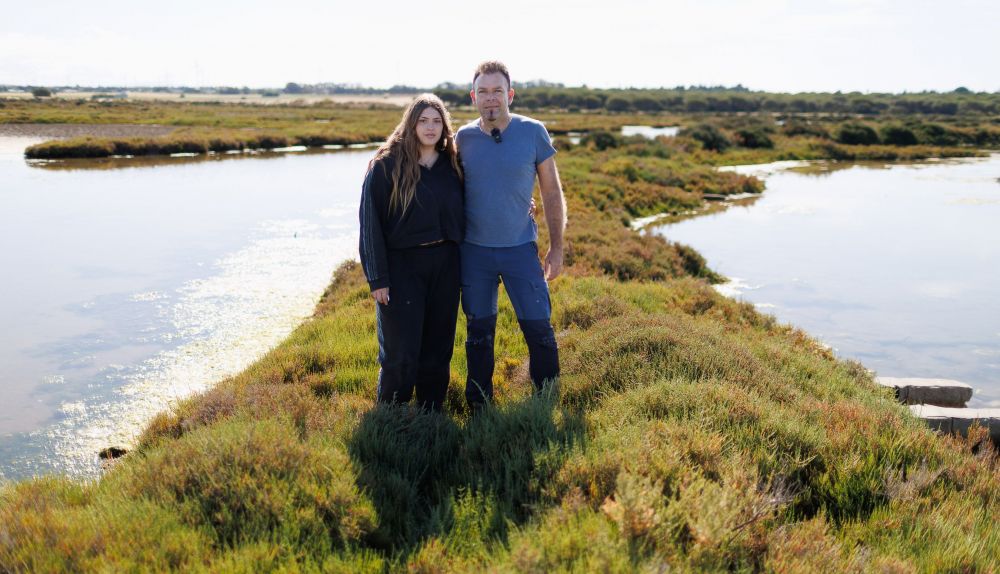
“In my 'normal' life’ I work in Seville, I am a neurologist there”, he says smilingly. Because what they are up to in this almost forgotten corner of the Bahía de Cádiz Natural Park is not a full-time job, but a research project, a 'startup', a joint adventure that involves doctors, environmentalists, chemists and even A designer.
Joan Montaner is from Cádiz, but he has spent a good part of his professional career abroad, in Barcelona, until a few years ago. “I had been working for a long time looking for medicines, especially for vascular issues, for strokes... When we came to Andalusia, in part of the project we began to work with the leftovers of people who work in the fields, for example with an avocado company. , and we reused the peelings, the bones, which are very rich in polyphenols. We had already begun to test these agri-food by-products in the laboratory, and we saw that they had important benefits at a neurological and vascular level. We had that experience of verifying that many plants rich in polyphenols have these beneficial effects. And we said: let's look for others, of which there is a lot, and see which ones have more of those polyphenols. After much study, we found halophytes, which have many more polyphenols than other plants.”, Explain.
Among the halophytes, there was one that stood out for its great presence in the Bay: the famous salicornia, so fashionable for a few years now in gastronomy. Halophyte plants use polyphenols, as Dr. Montaner explains, as a defense mechanism: in a stressful situation (such as being covered by sea water or attacked by an insect), they defend themselves by releasing polyphenols. Therein lies its great potential to improve vascular health.
In this salt mine, the team led by Montaner collects plant samples, of which there are at least more than twenty different halophyte species: atriplex portulacoides, lemongrass monopetalum, salicornia perennis, salicornia bushicosa… The list seems endless and Joan Montaner and Estrella recite it as if it were nothing. And they believe that there may be many more in the salt mine, unknown and with the same properties or more.
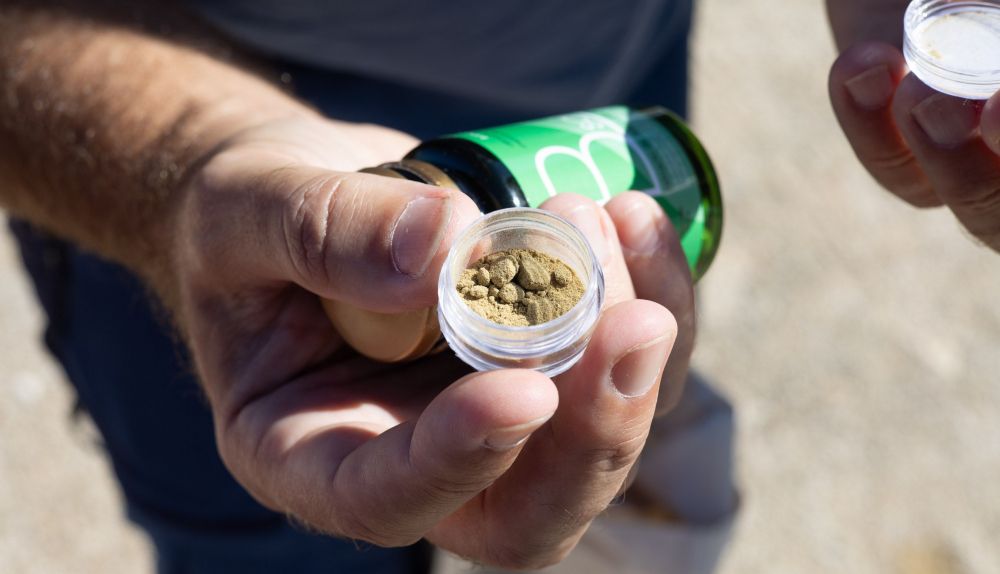
The team established contact with some salt farmers in the area and told them about Santa Bárbara, which interested them because of the variety of halophytes it houses. They asked permission from the Bahía de Cádiz Natural Park, which was immediately granted, and they began to rent the land, which is a concession. Both report that, when they arrived, it was somewhat abandoned, and that they had to endure weeks of hard work to prepare a minimum: throw away garbage and debris and make some roads passable.
Since then, they have held regular tastings every month. “of different species, and we analyze them; That, after a while, will let us know, for example, that the salicornia fruticosa We should harvest it between July and August, for example, which is when it has the most polyphenols.”explains Montaner. “What we collect is the top part, the tips, with a kind of pruner, very manual. Later the work can be done a little more mechanized”, he points out.
They take the samples to be analyzed in the laboratory in Seville and thus check their properties. They also draw conclusions about what time of year is the best to harvest each type of plant or where they have to cut and how to prune, in order to establish processes in the future. Estrella Montaner is the one who does the most work of coordinating the collection, due to her training in Environmental Sciences.
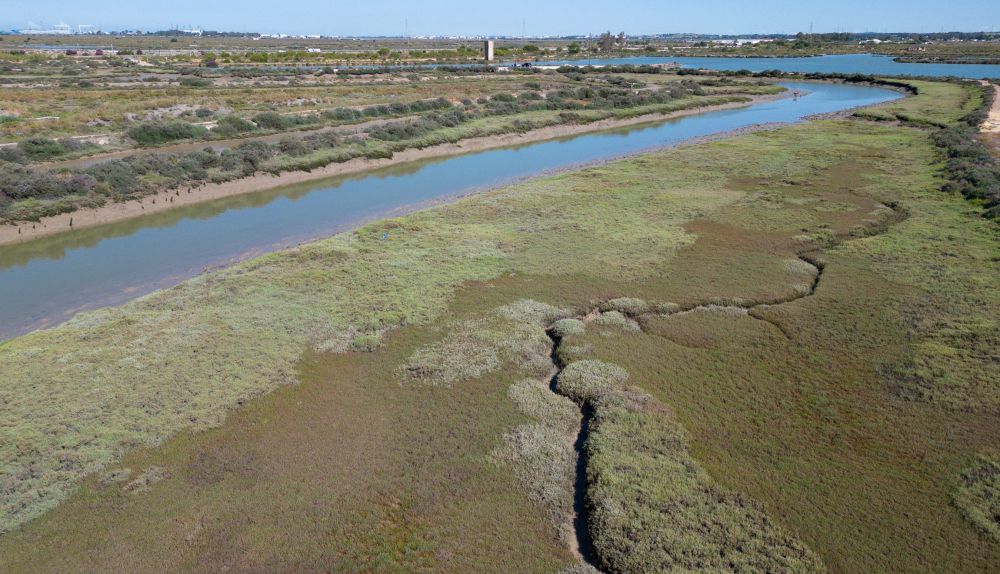
With all this work, they have released two product prototypes: plant-based salt, made with salicornia powder, and a food supplement in capsules with polyphenol extracts to improve vascular health and reduce cholesterol. For the capsules, they buy salicornia from established producers, since, as it is a supplement, the procedures, certification and approval to market it are more complex. Salicornia salt, which they have already begun to market for other companies, is produced in-house.
The (economic) complexity of launching a project like this
The team created the startup’ from which they operate, Marisma Biomed, to be able to sell the products and thus finance their work, since they do not have a stable source of financing, only with some collaborations with the University of Seville. They are constantly moving to obtain scholarships and projects that can finance their activity. They could finance themselves with investment funds, but they want “dilate as much as possible” that step, as Montaner clarifies. “These funds, after all, come, they give you money so that you can work for a while and that's it. Our idea would be, with what little by little sales are generated, even if they are small, to reinvest to continue growing.”, clarifies. Hence the need to establish a startup.
Like any startup, the ideal business model is to sell its solutions to other companies. “Reaching the final consumer is complicated”says Montaner. For this reason, they are also looking at typical products from the area that contain a significant amount of salt, such as salmorejo, and see if it would be feasible, without having a great impact on the final price for the consumer, to replace traditional salt with vegetable made with salicornia, much healthier due to its low sodium content and high potassium and magnesium.
For the supplement capsules, another member of the team, Dr. Soledad Pérez, also a neurologist, is in charge of coordinating the clinical trials part. Currently, they are going to start one in a health center in Jerez, with people recently diagnosed with high blood pressure.
In Granada they will also carry out another one in people with slightly high cholesterol. To do this, they have several doctors and a chemist, in charge of quality controls. The objective is to use these natural polyphenols to delay as much as possible for these people to become medicated.
The Bahía de Cádiz Natural Park has been quite receptive and facilitating from the beginning. They have very recently renewed the permit for the project for another five years, so they have work ahead of them in this salt mine.
There are also other projects underway there, according to what they say. “Some groups we collaborate with study the rhizome. The roots of these plants have many types of bacteria, some of which are almost unknown, that help metabolize salt and help make that plant so resistant. There is incredible potential in the Park”, Montaner concludes.
When lavozdelsur.es leaves the Santa Bárbara salt flat, Joan and Estrella Montaner continue walking along the dirt roads, seeing in the plants that make it up, and that are invisible to the eyes of the majority, the future of vascular health.
Sources: The Voice of the South




